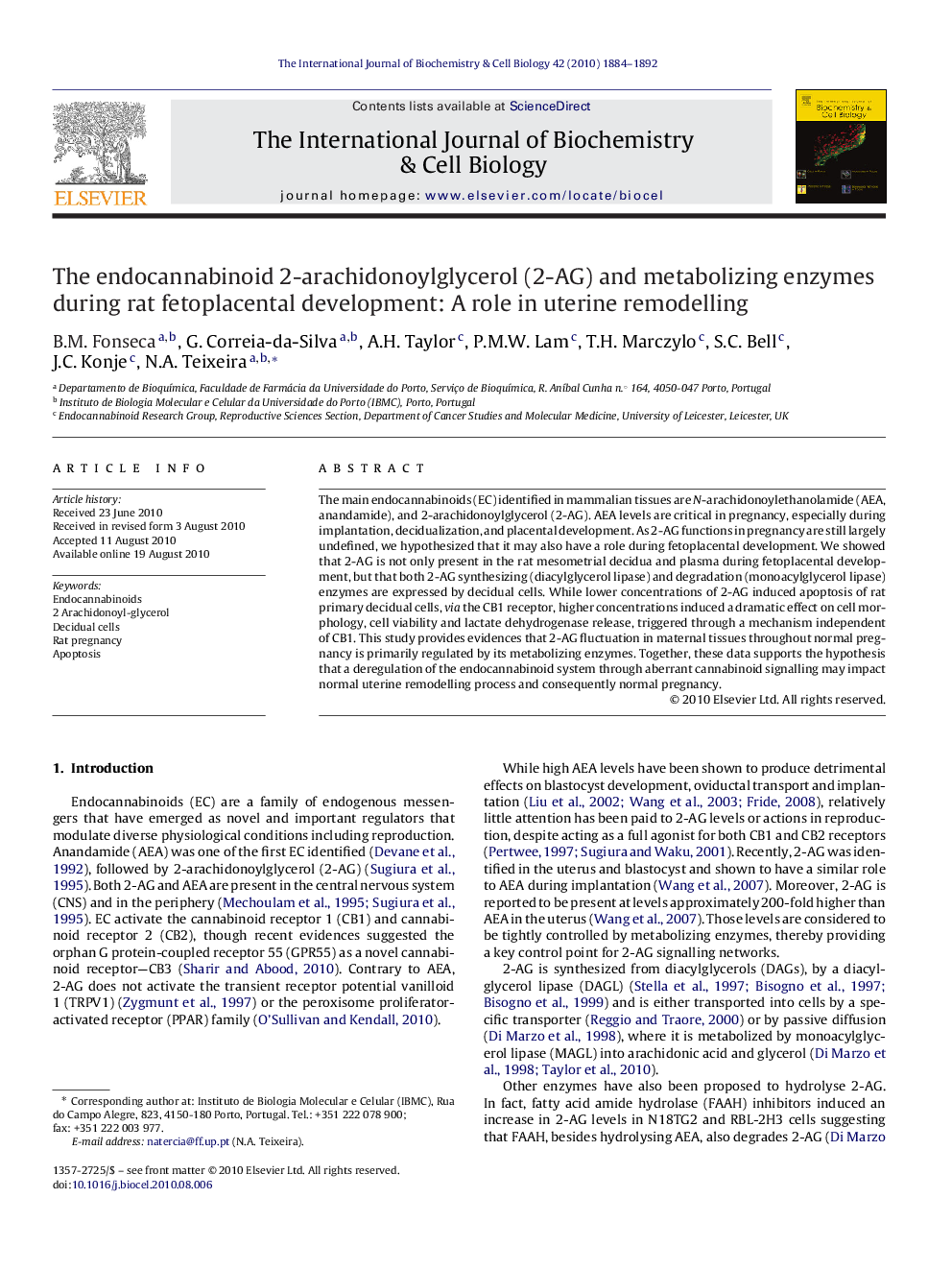| کد مقاله | کد نشریه | سال انتشار | مقاله انگلیسی | نسخه تمام متن |
|---|---|---|---|---|
| 1984313 | 1539936 | 2010 | 9 صفحه PDF | دانلود رایگان |
عنوان انگلیسی مقاله ISI
The endocannabinoid 2-arachidonoylglycerol (2-AG) and metabolizing enzymes during rat fetoplacental development: A role in uterine remodelling
دانلود مقاله + سفارش ترجمه
دانلود مقاله ISI انگلیسی
رایگان برای ایرانیان
کلمات کلیدی
موضوعات مرتبط
علوم زیستی و بیوفناوری
بیوشیمی، ژنتیک و زیست شناسی مولکولی
زیست شیمی
پیش نمایش صفحه اول مقاله

چکیده انگلیسی
The main endocannabinoids (EC) identified in mammalian tissues are N-arachidonoylethanolamide (AEA, anandamide), and 2-arachidonoylglycerol (2-AG). AEA levels are critical in pregnancy, especially during implantation, decidualization, and placental development. As 2-AG functions in pregnancy are still largely undefined, we hypothesized that it may also have a role during fetoplacental development. We showed that 2-AG is not only present in the rat mesometrial decidua and plasma during fetoplacental development, but that both 2-AG synthesizing (diacylglycerol lipase) and degradation (monoacylglycerol lipase) enzymes are expressed by decidual cells. While lower concentrations of 2-AG induced apoptosis of rat primary decidual cells, via the CB1 receptor, higher concentrations induced a dramatic effect on cell morphology, cell viability and lactate dehydrogenase release, triggered through a mechanism independent of CB1. This study provides evidences that 2-AG fluctuation in maternal tissues throughout normal pregnancy is primarily regulated by its metabolizing enzymes. Together, these data supports the hypothesis that a deregulation of the endocannabinoid system through aberrant cannabinoid signalling may impact normal uterine remodelling process and consequently normal pregnancy.
ناشر
Database: Elsevier - ScienceDirect (ساینس دایرکت)
Journal: The International Journal of Biochemistry & Cell Biology - Volume 42, Issue 11, November 2010, Pages 1884-1892
Journal: The International Journal of Biochemistry & Cell Biology - Volume 42, Issue 11, November 2010, Pages 1884-1892
نویسندگان
B.M. Fonseca, G. Correia-da-Silva, A.H. Taylor, P.M.W. Lam, T.H. Marczylo, S.C. Bell, J.C. Konje, N.A. Teixeira,